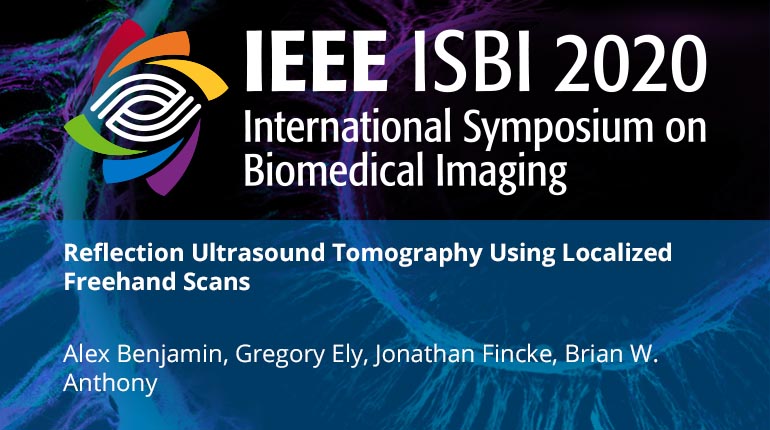
Already purchased this program?
Login to View
This video program is a part of the Premium package:
Reflection Ultrasound Tomography Using Localized Freehand Scans
- IEEE MemberUS $11.00
- Society MemberUS $0.00
- IEEE Student MemberUS $11.00
- Non-IEEE MemberUS $15.00
Reflection Ultrasound Tomography Using Localized Freehand Scans
Speed of sound (SOS) is a biomarker that aides clinicians in tracking the onset and progression of diseases such as breast cancer and fatty liver disease. In this paper, we propose a framework to generate accurate, 2D SOS maps with a commercial ultrasound probe. We simulate freehand ultrasound probe motion and use a multi-look framework for reflection travel time tomography. In these simulations, the ``measured'' travel times are computed using a bent-ray Eikonal solver and direct inversion for compressional speed of sound is performed. We have shown that the assumption of straight rays breaks down for large velocity perturbations (greater than 1 percent). The error increases 70 fold for a velocity perturbation increase of 1.5 percent. Moreover, the use of multiple looks greatly aides the inversion process. Simulated RMSE drops by roughly 15 dB when the maximum scanning angle is increased from 0 to 45 degrees.
Speed of sound (SOS) is a biomarker that aides clinicians in tracking the onset and progression of diseases such as breast cancer and fatty liver disease. In this paper, we propose a framework to generate accurate, 2D SOS maps with a commercial ultrasound probe. We simulate freehand ultrasound probe motion and use a multi-look framework for reflection travel time tomography. In these simulations, the ``measured'' travel times are computed using a bent-ray Eikonal solver and direct inversion for compressional speed of sound is performed. We have shown that the assumption of straight rays breaks down for large velocity perturbations (greater than 1 percent). The error increases 70 fold for a velocity perturbation increase of 1.5 percent. Moreover, the use of multiple looks greatly aides the inversion process. Simulated RMSE drops by roughly 15 dB when the maximum scanning angle is increased from 0 to 45 degrees.
 Cart
Cart Create Account
Create Account Sign In
Sign In





